The apple is a symbol of fertility in Norse and Germanic pagan tradition. So, there is some irony in the fact that work by the Scottish Plant Recovery project to restore the crab apple (Malus sylvestris) has been finding fertility problems in our native apple. Even good crops of fruit have sometimes resulted in disappointingly small amounts of healthy seed.
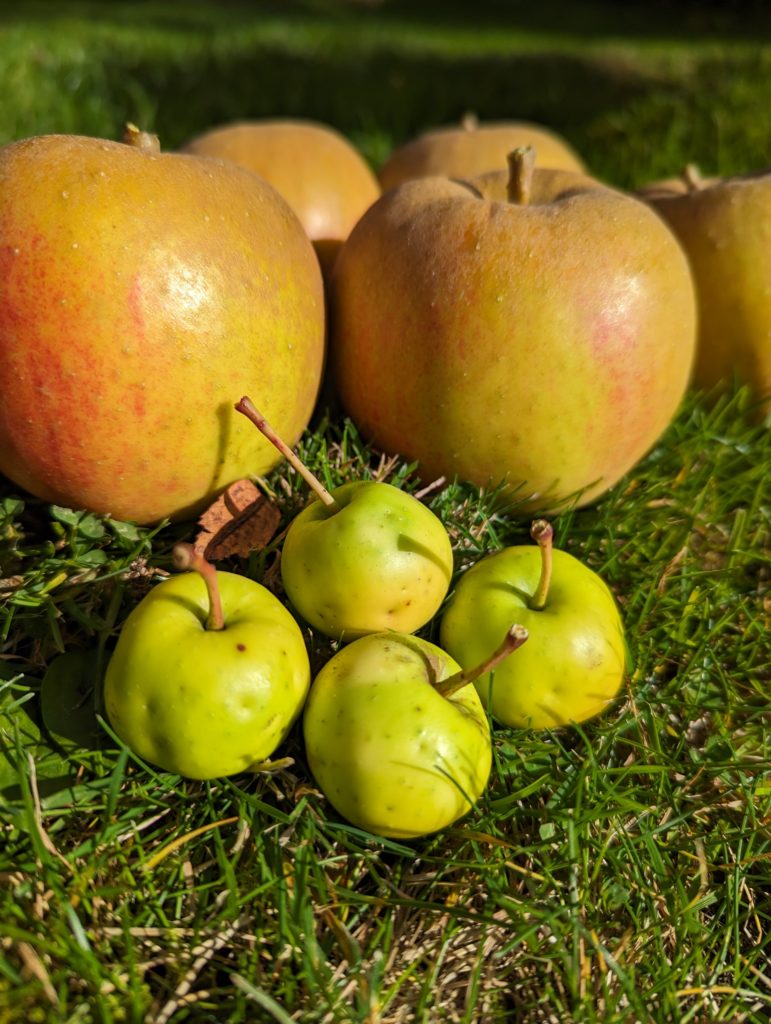
This is because many native crab apple trees are simply too far from potential partners. Isolated trees are not getting the pollen they need. Apples, like many plants, require pollination by a compatible partner and cannot make use of their own pollen. This means that, regardless of pollinator activity levels, if the required pollen is too far away pollinators are unlikely to bridge the gap and the tree will not produce viable seeds.
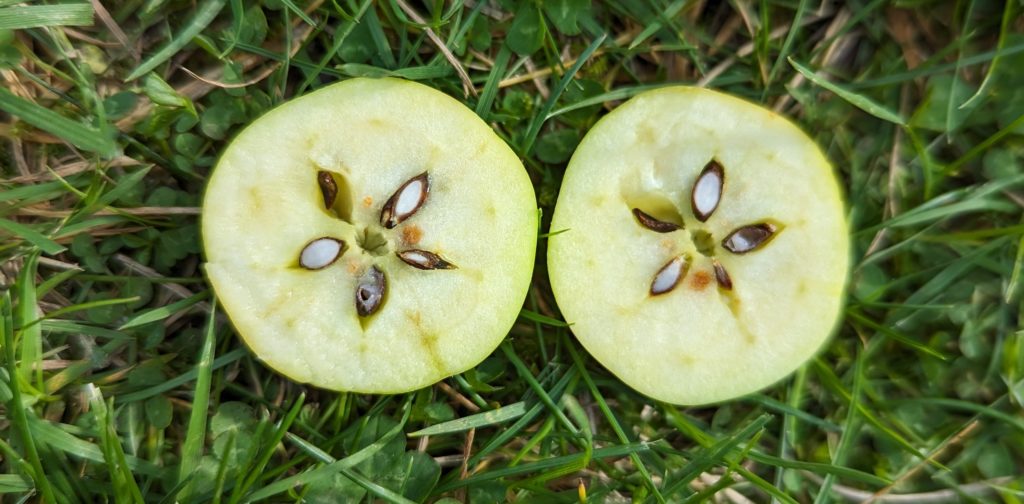
This problem is familiar to gardeners and commercial fruit growers as the same requirement for a pollination partner applies to the cultivated apple. If you have ever bought an apple tree you may have wondered why your tree is in a certain ‘pollination group’. Most apple varieties are self-incompatible, and the pollination groups identify varieties that are likely to be in flower at the same time. There are a few apple varieties that are self-fertile and do not need a partner. A well-known self-fertile variety that does well in Scotland is ‘Discovery’.
Getting a good crop of apples will invariably involve the planting of compatible varieties. Orchards might contain thousands of trees of one variety. In genetic terms this is equivalent to a single individual, so a scatter of compatible pollen donors will be necessary for pollination. Growers can solve this problem by alternating rows of different compatible varieties. Allotment growers rarely need to worry about partners for their trees as there will be many varieties nearby. However, home growers are likely to get better results if they plant at least two compatible varieties.
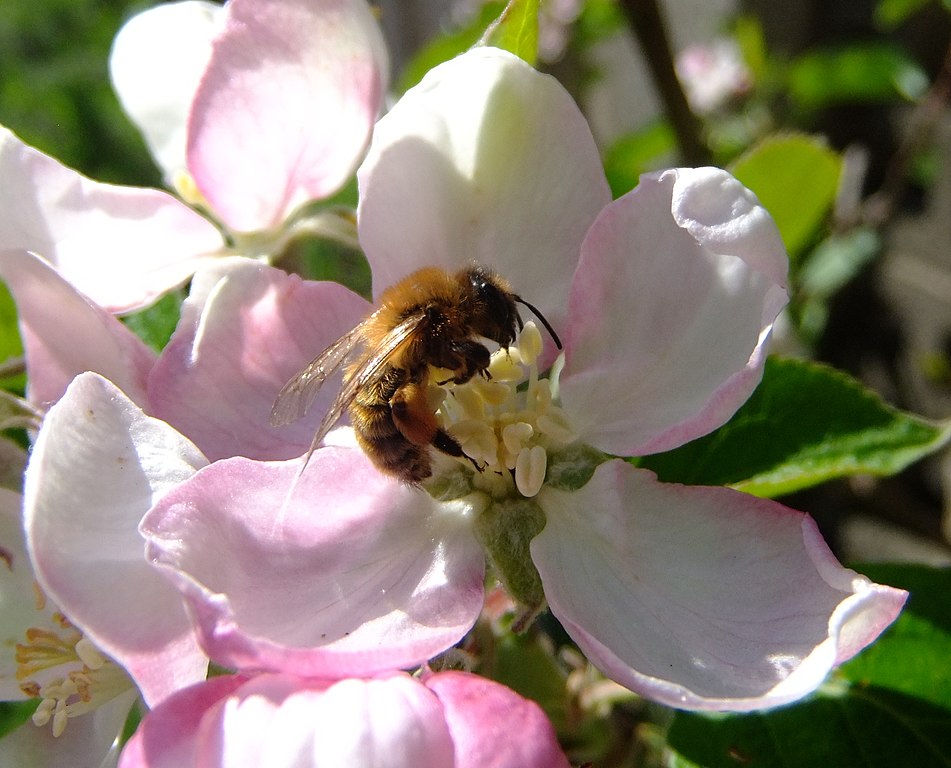
Exploring this aspect of apple cultivation helps us understand infertility in wild crab apples. But there is another reason why cultivated apples are relevant to the rather rare native apple and that is the fact that these two species will readily interbreed. Commercial growers sometimes take advantage of this by planting a few crab apples to act as sources of pollen in orchards.
However, it is pollen flowing in the other direction – from cultivation into the wild – that presents a problem for the wild apple. If an isolated wild tree is only getting pollen from nearby cultivated apples the next generation will all be hybrids with a 50:50 combination of wild and cultivated genes. Such offspring look quite different from wild apples, with larger leaves and fruit. The leaf underside, leaf stalk and fruit stalk of these hybrids will also be hairy. This is a feature inherited from cultivated apples and is not seen in the hairless wild crab apple.
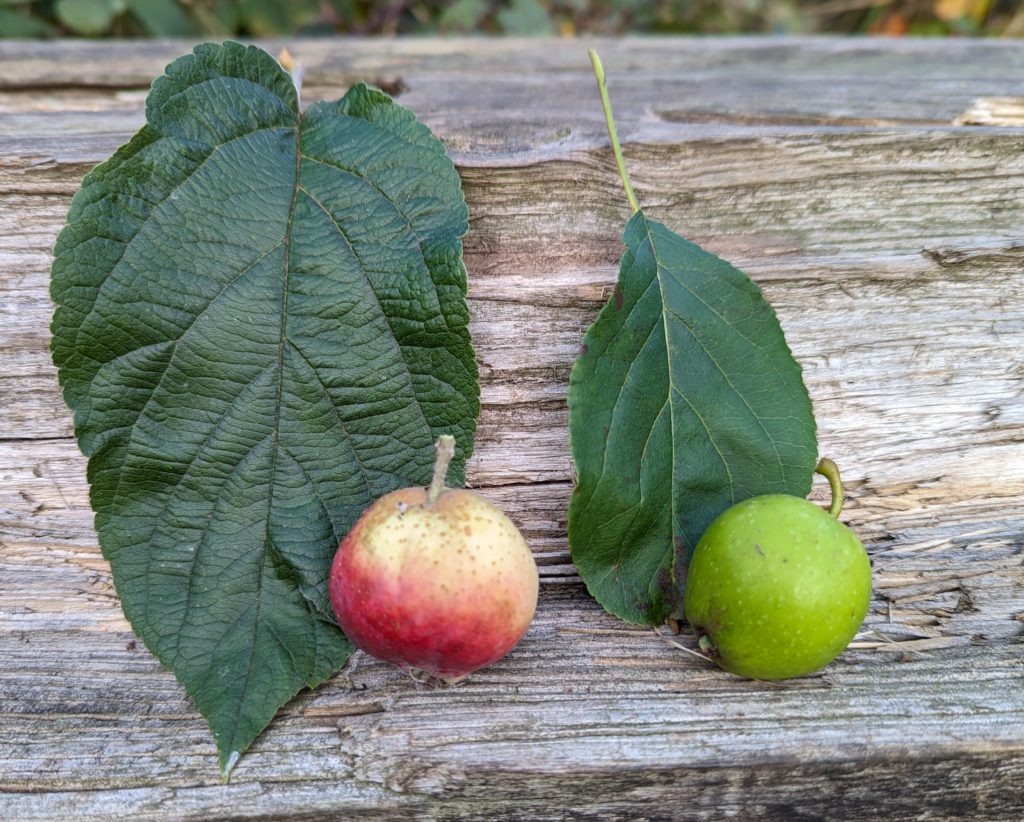
Wild crab apples often exist as single individuals rather than in groups. It is hard to know how natural this isolation is. What we do know is that crab apples seem to favour brighter conditions found at woodland edges and in open habitats. It seems likely that they are one of several trees that are a component of scrub that naturally colonises open habitats. Eventually scrub can turn into closed canopy woodland as it protects the seedlings of larger tree species from browsing herbivores: many scrub species are thorny. Scrub has had a bit of an image problem and in our heavily managed landscape it has been largely eliminated. Our simplified system of neatly defined blocks of grassland, woodland or cropland is probably one reason why crab apple is rare.
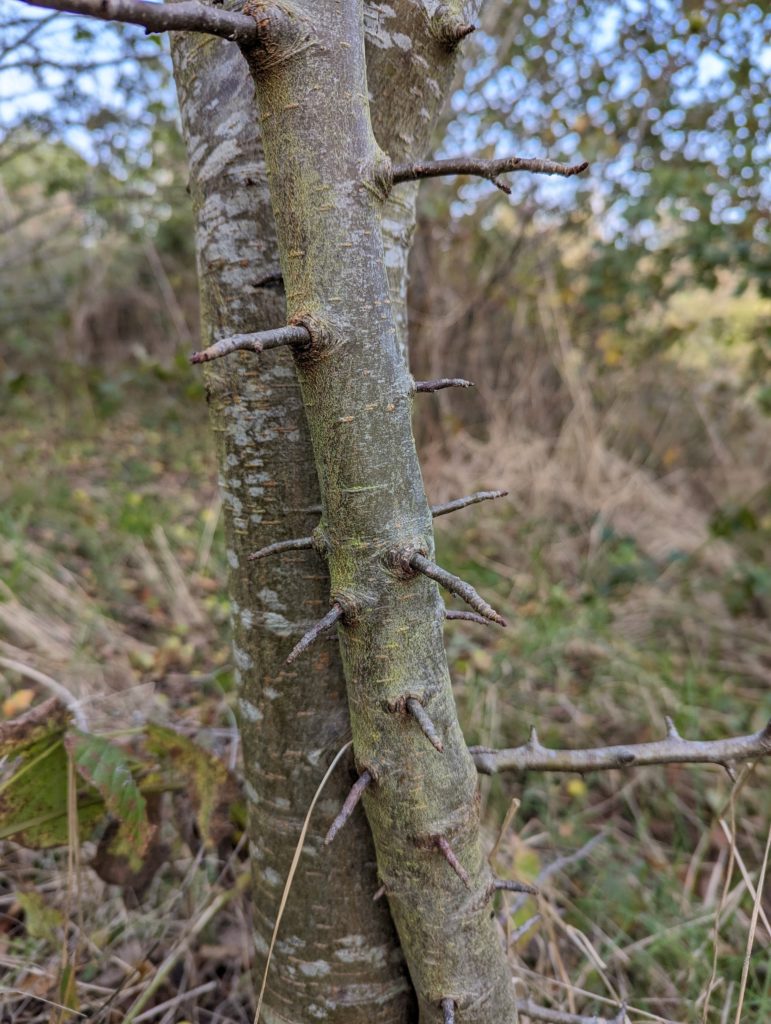
Isolated wild apples in a landscape where cultivated trees and ‘pippins’ – feral trees grown from discarded apples – are common will tend to produce hybrid offspring. We have now reached a point, backed by genetic evidence, where many ‘wild’ apples are in fact hybrids or feral trees. The numerical advantage of cultivated apples means that they are likely to continue to dilute the gene pool of the wild apple unless we take action to protect the native species.
When the cultivated apple first arrived on our shores it did not pose a threat to native apples. Genetic evidence shows that the cultivated apple originated in Central Asia and that it was influenced by interbreeding with crab apple. This contribution of local genes was probably an important part of the ongoing development and the adaptation of apples to local conditions. Today, the rarity of wild apples, combined with the abundance of their domesticated cousins, has created the hybridisation threat. You can read more about the story of the origin of the apple in Blazing the apple trail.
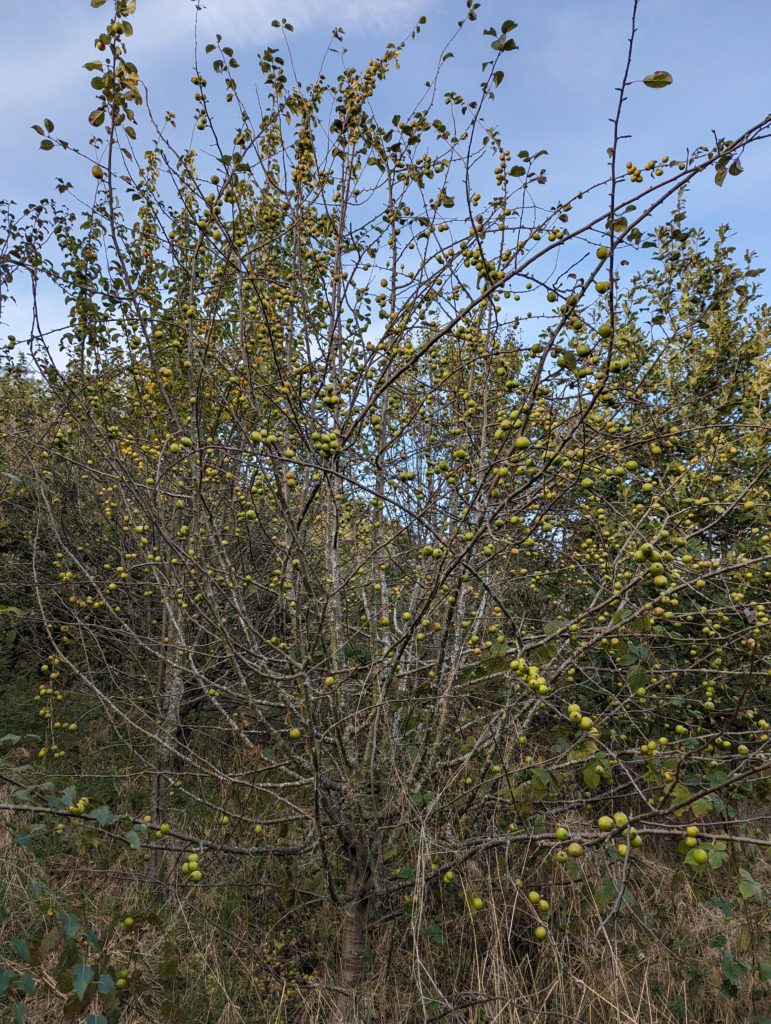
This is where the work of the Scottish Plant Recovery projects is helping. Sourcing seeds from surviving native trees with a low likelihood of having hybrid offspring allows us to raise a new generation from various locations that will contain the necessary genetic diversity to be able to form viable new populations. Planting the young trees in genetically mixed groups in suitable sites where regeneration will be possible should lead to natural spread in the future. Crab apples seem to be quite adaptable to a range of soil conditions. We hope that planting on sites already identified as suitable for some of the other species in the Scottish Plant Recovery project will be possible. Being able to restore several species at once to some of the large nature restoration projects we have formed collaborations with is an exciting prospect.


- X @TheBotanics
- X @nature_scot
- X and Facebook @ScotGovNetZero
- Facebook @NatureScot
- #NatureRestorationFund
